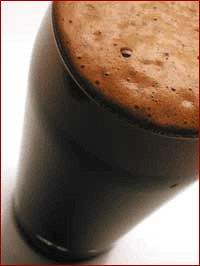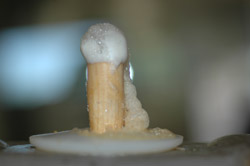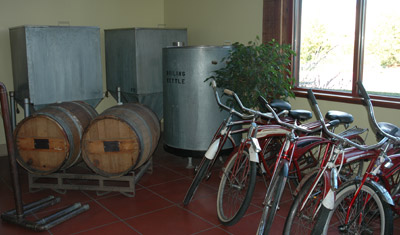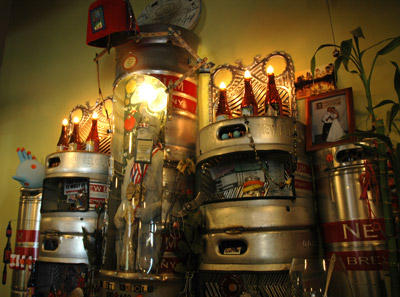The Tria Fermentation school begins classes tomorrow (Wednesday, Oct. 18) with Prof. Sam Calagione of Dogfish Head Brewery in Delaware at the helm.
The Philadelphia school is the brainchild of Jon Myerow, who also owns the Innovate cafe Tria. He’s focusing on wine, cheese and beer, with classes led by by winemakers, fromagers, brewmasters, authors and other fermentation experts.
Food & Wine magazine recently picked the Tria Fermentation School as one of “America’s 50 most amazing wine experiences.”
Upcoming classes include:
BEER: The Extreme Beers of Dogfish Head, with Sam Calagione, Wednesday, October 18, 6:30-8 p.m., $30.
CHEESE: The Artisanal American, with Liz Thorpe, Friday, October 20, 7:30-9 p.m., $45. Thorpe, Director of Wholesale at New York’s famed Murray’s Cheese, and co-author of the forthcoming Murray’s Cheese Handbook, will present her six favorite autumnal American cheeses.
BEER: Brewing with Wood with Rob Tod. Tuesday, October 24, 6:30 to 8 p.m., $40. Tod, Founder of Allagash Brewing in Maine, will discuss four examples of wood-aged beers from Allagash along with examples from California’s Russian River and Michigan’s Jolly Pumpkin breweries.
WINE: High Elevation Wines from Down Under with Michael Dhillon. Wednesday, November 1, 6:30-8 p.m., $50. Australia’s Dhillon will share the trials, tribulations and extraordinary rewards of high altitude winemaking and small productio.
WINE: The Allure of the Languedoc with Bruno LaFon, Friday, November 3, 6:30- 8 p.m., $45. Students will learn why LaFon, a former Burgundian winemaker from the family of Domaine des Cômtes Lafon, headed to Languedoc to participate in the rebirth of the region. LaFon will host a tasting of his delicious estate wines.
WINE & CHEESE: Classic Pairings with Michael McCaulley. Monday, November 6, 6:30-8 p.m., $50. After covering wine and cheese basics, McCaulley will introduce students to some classic marriages that have withstood the test of time as well as some more modern pairings.
BEER: The Dark Side with Tom Baker. Wednesday, November 8, 6:30-8 p.m., $35. Baker, founder of recently departed Heavyweight Brewing, will debunk the myths and demonstrates the incredible diversity of black beer.
CHEESE: Spanish Dairy Rising with Adrian Murcia. Tuesday, November 14, 6:30-8 p.m., $45.
The school is located at 1601 Walnut Street, Suite 620, and the number to call for information is 215.972.7076.
 Chances are that neither you nor I will ever see Frederick Miller Classic Chocolate Lager because it’s only due to be distributed in the Midwest.
Chances are that neither you nor I will ever see Frederick Miller Classic Chocolate Lager because it’s only due to be distributed in the Midwest. First, beer. Tomorrow a New York Times tasting panel will report back on porters. Eric Asimov writes in advance he “was impressed with the high quality of porters available today.”
First, beer. Tomorrow a New York Times tasting panel will report back on porters. Eric Asimov writes in advance he “was impressed with the high quality of porters available today.”

